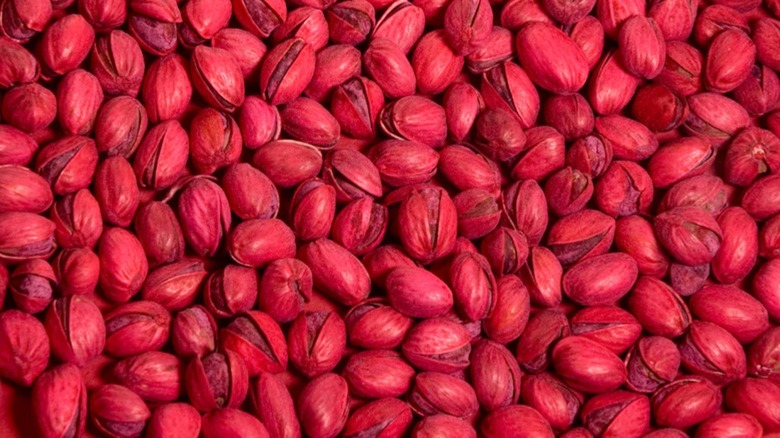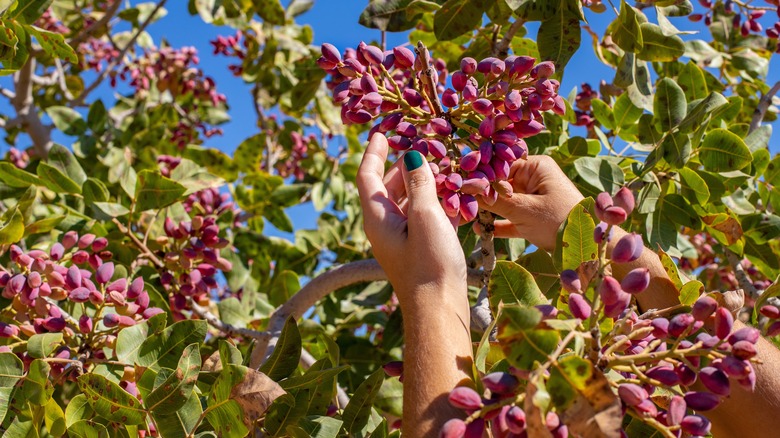The Unique Origin Story Behind Red Pistachios
It may come as a shock to a lot of younger readers, but pistachio shells in the United States used to be bright red. Walk through a supermarket today, and every pistachio you see will be the classic creamy light brown shell around the green nut. Yet, 40 years ago and prior, that would have been a rarity. It's not because they were some different breed of pistachio with red shells — it's because the shells were dyed by sellers. How these red pistachios came to be the standard for years in U.S. supermarkets is a somewhat unclear story with competing theories, but it shows how history, politics, marketing, and agriculture can all collide in unexpected ways to influence how and what we eat.
There are two main theories for how American pistachios ended up red, and they may even overlap with each other to some degree. The story that seems to have the most support from experts and historians is that the shells were dyed red to cover up imperfections. Prior to the 1980s, most pistachios sold in this country were imported from Iran and, to a lesser extent, from other countries in the Middle East. When speaking to HuffPost, the executive director of American Pistachio Growers said that the way the nuts were harvested would cause splotchy stains on the shells, and the red dye helped make them more visually appealing for sale. But, not every source agrees with this account completely.
Reports conflict on red pistachios
According to other reports, the stain story is a myth. The Los Angeles Times spoke with California pistachio growers during the 80s, when the state's production of the nut exploded, and the California Pistachio Commission claimed that red dye was actually the result of street vendors in Brooklyn trying to stand out from the crowd. That story says one vendor by the name of Zaloom altered his pistachios with a salt coating, and another vendor hit back by dying their pistachios red.
There is also the possibility that the truth is a combination of the stories. HowStuffWorks suggests that Zaloom dyed his pistachios to cover up imperfections, and his success led to copycats who did the same. Even the end of red pistachios in the U.S. is marked by uncertainty. There is agreement that red pistachios became less common as production in California replaced imports from the Middle East, but the trigger has been debated.
Some claim it was the Iran hostage crisis and subsequent embargoes that disrupted the pistachio trade. However, The Washington Post asserted that the Iran hostage crisis played no role in the disappearance of red pistachios. Instead, the publication pointed to the fact that California built aqueducts in the 1960s that increased the water available to farmers and offered tax credits to grow pistachios in the early 1970s, long before the crisis. As with anything in history, the story and origins of red pistachios can be hard to know for certain.

